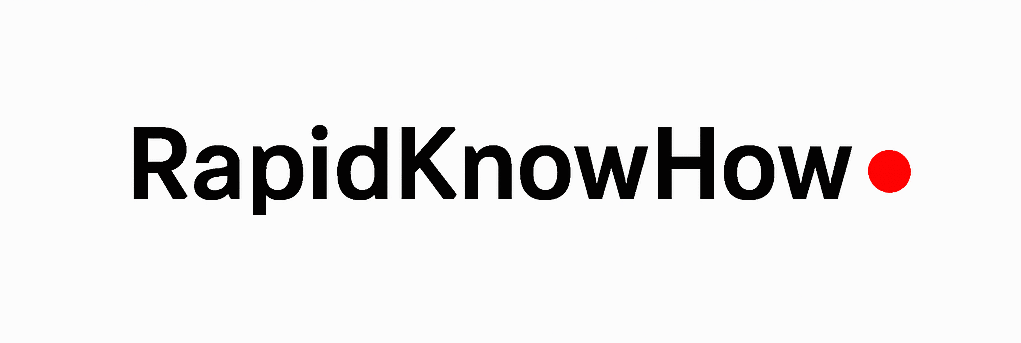Here’s a tight, battle-tested playbook for 2025–2030—plus concrete wins and missteps from 🇦🇹 🇨🇭 🇩🇰 you can point to in boardrooms or war rooms.
Most effective & efficient strategic actions (by target group)
1) Segment by “decision job” (not just demographics).
- Investors/Boards: de-risk, regulatory clarity, forward guidance
- SMEs: cost/time saved, how-to templates
- Citizens (18–29): meaning, peer validation, short-form video
- Citizens (50+): trust, safety, service access, phone/print backup
- Journalists/Opinion leaders: credible docs, timelines, quotes, embargo briefs
- Public servants/Implementers: SOPs, FAQs, escalation paths
2) Message architecture (three layers).
- 8-second hook: 1 claim + 1 proof (“what changes tomorrow?”)
- 60-second explain: 3 bullets (benefit, cost, risk mitigation)
- Deep-dive trust pack: legal basis, data sheet, timeline, contacts
3) Pick the right messenger.
- Regulators/experts for risk, mayors/service heads for “how”, youth creators for reach. Third-party validators beat ministerial self-praise.
4) Channel mix that respects habits.
- Investors/Boards: 1-pager PDF + 20-min analyst call + LinkedIn post
- SMEs: WhatsApp broadcast lists, webinar replays, checklists
- Youth: TikTok/IG Reels + Discord/Reddit AMAs (modded)
- Seniors: public TV, local press inserts, phone hotline
- Journalists: embargoed brief + doc pack, searchable newsroom page
5) Radical transparency for anything with risk.
- Publish the legal basis, assumptions, data refresh cadence, and “what we’ll do if we’re wrong” up front. (This is the #1 cost-saver in crises.)
6) Two-week test cycles.
- A/B 3 headlines and 2 proof-points with the real audience; ship the winner. Freeze “pretty” rewrites that add risk but no lift.
7) Plain-language & “service design” comms.
- Readability ≤ Grade 8. Every policy page includes: What/Why/When/How/If things go wrong.
8) Crisis protocol (four clocks).
- T+60 min holding line (what we know/don’t know).
- T+3 hrs factsheet v0 + named lead.
- T+24 hrs timeline + Q&A + decision tree.
- T+72 hrs corrective actions & compensation pathways.
9) Outcome dashboards, not vanity metrics.
- Show adoption, error rates, wait times, opt-outs, complaints resolved per week—publicly.
10) “Exit ramps” & opt-ins.
- Always offer low-tech alternatives (paper/phone) and reversible choices—this increases adoption and lowers backlash.
Cases: what worked / what didn’t (AT / CH / DK)
🇨🇭 Switzerland — Turnaround success on Digital ID (2025)
- What worked: After voters rejected e-ID in 2021 over private-company control, the 2025 version centered trust: state-run, privacy-by-design, optional and free; clear scoping of data use; steady, facts-first messaging. Narrow win (50.4%) but a salvaged reform. Atlantic Council+3The Guardian+3The Times+3
- Playbook takeaway: If you lost once, re-design governance and say exactly what changed (ownership, data, price). Put the Justice Minister/independent experts in front, not marketing.
🇨🇭 Switzerland — Credit Suisse crisis (2023) & “lessons learned”
- What didn’t: Fragmented signals and late clarity during a fast-moving bank run made confidence harder to restore. Supervisors later published a post-mortem with lessons. finma.ch
- Playbook takeaway: In financial shocks, publish a single timeline, name accountable leads, and pre-announce capital/guarantee backstops in plain language to anchor expectations.
🇩🇰 Denmark — EU defense opt-out referendum (2022)
- What worked: Cross-party consensus framing (“national security update”), simple question, consistent messenger discipline delivered a strong “Yes.” Wikipedia+1
- Playbook takeaway: On complex sovereignty topics, unify the frame and avoid mixed cues; let defence experts carry the details, politicians carry the stakes.
🇩🇰 Denmark — Mink cull scandal (2020–22)
- What didn’t: An illegal order, shifting explanations, and poor legal transparency triggered harsh criticism from the inquiry. Reuters+2The Guardian+2
- Playbook takeaway: Never announce coercive measures without explicit legal basis in the same document. Publish the statute paragraph and the signed order, or don’t act yet.
🇦🇹 Austria — COVID vaccine mandate U-turn (2022)
- What didn’t: World-first population-wide mandate announced, then suspended before enforcement; legal/policy whiplash eroded trust and polarized audiences. PMC+1
- Playbook takeaway: Test public acceptability with pilots and sunset clauses; communicate off-ramps and review points from day one.
🇦🇹 Austria — Climate protest communications (2024)
- Mixed: The “Last Generation” chapter disbanded after low traction; official communications emphasized legality/order, but lacked a parallel channel translating climate policy into tangible household benefits for the persuadable middle. euronews
- Playbook takeaway: Pair enforcement messaging with everyday benefit calculators (bills saved, grants unlocked). Win the movable middle, not just the base.
🇨🇭 Switzerland — Energy-saving campaign (2022)
- What worked: A national “stop energy waste” service-oriented campaign with simple tips, central website, and consistent iconography; easy to share by municipalities/SMEs. UsersTCP
- Playbook takeaway: In utility crises, go “service first”: one URL, printable checklists, and weekly progress stats.
Fast templates you can deploy tomorrow
A) Target-Group Comms Canvas (1 page per audience)
- Decision job: (e.g., “approve budget”, “adopt app”)
- Top 2 objections & proofs
- Messenger(s): regulator / mayor / peer / influencer
- 3-layer message: hook / 3 bullets / trust pack
- Channels & cadence: (e.g., LinkedIn weekly + analyst call monthly)
- KPI trio: adoption %, complaint rate, time-to-resolution
- Exit ramps: hotline, paper form, opt-out
B) “Trust Pack” contents (ship with every announcement)
- Legal basis screenshot + paragraph citation
- Data sheet (method, refresh cycle)
- Timeline with decision gates & review dates
- Risk/cost table + mitigation + compensation policy
- Contacts & escalation path (name + phone)
C) Two-week test loop
- Week 1: A/B hooks (paid + organic), measure CTR and saves
- Week 2: Release best version + add FAQ from real questions; publish update log
Metrics that actually matter (and save money)
- Adoption / opt-in rate (by audience)
- Error & complaint rate (and fix-time)
- Trust delta (pre/post via 3-question pulse)
- Reach to “non-fans” (share of views from neutral/critical cohorts)
- Policy reversals avoided (proxy for comms quality)
here’s a crisp Austria-only review (2000–2025) of what worked / what backfired in campaigns and government comms, plus a reusable playbook you can deploy tomorrow.
Austria 2000–2025: signal cases & lessons
1) “Message Control” era (ÖVP/Kurz, ~2017–2021) — efficient but fragile
- Strategy: centralized talking points, tight media choreography, low tolerance for off-script ministers.
- Why it worked (short-term): consistency raised perceived competence; 2017–19 electoral successes. Tandfonline+1
- Why it broke (systemically): scandals (Ibiza fallout, ad-buy controversies) + perception of media manipulation undermined trust; concept became a negative label. The Guardian+2SAGE Journals+2
- Do instead: keep the discipline, drop the opacity—publish source docs (orders, audits) the same day you brief.
2) Refugee & border narrative (2015–2016) — framing pivot matters
- What happened: Austria shifted from “Willkommenskultur” to “limits/fences” discourse; framing determined public mood and media agenda. romea.cz+2Tandfonline+2
- Lesson: audiences accept hard measures if named honestly (capacity, legality) and paired with services (integration, municipal aid) communicated in plain language.
3) Smoking-ban zig-zag (2017–2019) — policy U-turns are expensive
- Moves: 2017 coalition scrapped the planned hospitality ban; 2019 comprehensive smoke-free law adopted. The Irish Times+1
- Lesson: if you reverse course, spell out what changed (evidence, partners, enforcement) and publish an impact note; otherwise you pay twice—first in controversy, then in credibility.
4) Ibiza crisis (2019) — own the timeline or lose the story
- What happened: Sting video → government collapse → snap election; competing narratives filled the vacuum. AP News+2The Guardian+2
- Play: one public master timeline, daily updates by a neutral lead, and a commitment to full document disclosure. (Austria leaned into “transparency” language late; earlier would have lowered conjecture.) AP News
5) COVID vaccine mandate (2021–2022) — announce exit ramps on day 1
- Moves: world-first adult mandate passed (Feb 2022) → suspended (Mar 2022) → never enforced. Axios+2Axios+2
- Lesson: for coercive measures, pre-announce review dates, criteria, and off-ramps; publish the legal basis and risk model in a “trust pack” to avoid a confidence whiplash. Europäisches Parlament
6) Klimabonus payouts (2022) — service design beats slogans
- Issue: equal € payouts + operational quirks (e.g., to high earners / deceased) sparked controversy and confusion. The Local Austria
- Lesson: pair the announcement with a who-gets-what explainer, corner cases FAQ, and a weekly fix-rate dashboard; otherwise critics define the frame.
7) COVID spending transparency & audits (2020–2023) — retrospective clarity helps
- Good practice emerging: Court of Audit synthesized lessons and urged clearer governance for future crises; use these as comms anchors. Der Rechnungshof+1
Playbook: high-leverage actions for AT audiences (2025–2030)
1) Publish a “Trust Pack” with every big announcement
- One-pager (What/Why/When/How/If wrong) + PDF annex (legal paragraph screenshot, timelines, cost/risk table, contact & escalation). This directly addresses pain points from Ibiza, mandate U-turn, Klimabonus. Europäisches Parlament+2AP News+2
2) Pre-commit to review gates and exit ramps
- Put dates & criteria into the first press release; don’t retrofit (smoking-ban and mandate showed the cost of retrofits). extranet.who.int+1
3) Timeline ownership in crises
- Public, living timeline page updated every 24h; media and citizens link to your clock, not rumor threads (Ibiza lesson). AP News
4) Balance discipline with plurality
- Keep central talking points, but let domain messengers (mayors, doctors, auditors) handle Q&A with documents in hand; avoids “message control” backlash. SAGE Journals
5) Service-first for benefits & fees
- For payouts/taxes/fees, lead with an eligibility calculator + top 10 edge-cases + processing times; report weekly fix rates (Klimabonus lesson). The Local Austria
6) Media buy transparency
- Proactively disclose state advertising allocations and performance; aligns with EU Rule-of-Law expectations and blunts “ad-pressure” narratives. European Commission
Quick reference table
| Campaign / Episode | What worked | What didn’t | Copy-this move |
|---|---|---|---|
| Message Control (2017–21) | Consistency, speed | Over-centralization → trust erosion | Keep alignment; publish docs & Q/A hubs. Tandfonline+1 |
| Refugee framing (2015–16) | Clear capacity narrative | Late clarity on trade-offs | Name limits + services in same brief. Tandfonline+1 |
| Smoking ban (2017→2019) | Final 2019 law clear | U-turn confusion | Announce rationale deltas when reversing. The Irish Times+1 |
| Ibiza (2019) | Rapid election call | Timeline vacuum early on | Single master-timeline + daily updates. AP News |
| Vaccine mandate (2022) | Legal clarity, fast passage | Suspension whiplash | Build in review gates/criteria day 1. Axios+1 |
| Klimabonus (2022) | Broad reach | Edge-case backlash | Eligibility explainer + fix-rate dashboard. The Local Austria |
| COVID audits (2020–23) | Lessons consolidated | — | Cite audit takeaways in future briefs. Der Rechnungshof |
🇦🇹 Austria Campaigns 2000–2025 – Citizen Lens Assessment
1. Message Control (Kurz era 2017–2021)
- Citizen experience:
- Pros: Consistency reduced noise – people knew what the “line” was.
- Cons: Felt top-down, manipulative, and closed to debate. Citizens who disagreed felt silenced, not engaged.
- Citizen score: 🔴 Fragile trust. Short-term clarity, long-term alienation.
2. Refugee & Border Communication (2015–2016)
- Citizen experience:
- Pros: Clear turning point (limits, fences) gave many citizens a sense of control in chaos.
- Cons: Sudden shift felt like betrayal to welcoming citizens, and stigmatization to migrants. No citizen dialogue – “done to us, not with us.”
- Citizen score: 🟠 Divisive trust. Citizens split, each camp hardened.
3. Smoking Ban Saga (2017–2019)
- Citizen experience:
- Pros: Final ban welcomed by majority, finally aligned with EU standards.
- Cons: The zig-zag made citizens feel like bargaining chips in coalition games. Many asked: “Why is my health subject to backroom deals?”
- Citizen score: 🟠 Eroded confidence. Even the right outcome didn’t erase process distrust.
4. Ibiza Scandal (2019)
- Citizen experience:
- Pros: Citizens appreciated transparency when the video was released. A snap election felt like “our vote will clean this mess.”
- Cons: Initial silence and drip-feeding created a perception of elite games. “They only tell us when caught.”
- Citizen score: 🔴 System distrust. Reinforced idea of political class detached from citizens.
5. COVID Vaccine Mandate (2021–2022)
- Citizen experience:
- Pros: Some citizens felt protected by bold action; clear law initially reassured the pro-vaccine camp.
- Cons: U-turn before enforcement created whiplash. Citizens felt used as guinea pigs. Polarization deepened: mandate believers vs freedom defenders.
- Citizen score: 🔴 Polarized trust collapse. Neither side satisfied in the end.
6. Klimabonus (2022)
- Citizen experience:
- Pros: Tangible benefit – “money in hand.” Many appreciated fairness idea (everyone gets something).
- Cons: Chaos in execution (payments to deceased, foreigners abroad) angered citizens who saw waste and unfairness.
- Citizen score: 🟠 Trust dented by execution. Good idea soured by poor service delivery.
7. COVID Spending Transparency (2020–2023, Court of Audit Reports)
- Citizen experience:
- Pros: Clear numbers and post-crisis accountability reports gave many a sense that someone is “watching the shop.”
- Cons: Arrived late – while money flowed, citizens felt opaque decision-making. Transparency was retrospective, not proactive.
- Citizen score: 🟡 Partial trust recovery. Audit gave clarity but lagged behind citizen expectations.
Citizen Takeaways – What Matters Most
From 2000–2025, Austrian citizens repeatedly punished four mistakes in campaigns:
- Zig-zagging policies without explaining what changed
– Citizens read this as incompetence or lobby capture. (Smoking ban, vaccine mandate) - Talking at people, not with them
– Message Control delivered soundbites, not dialogue. Citizens felt voiceless. - Promises without service design
– Klimabonus showed: if the process feels sloppy, trust evaporates even when money arrives. - Transparency too late
– Audits after the fact help historians, not citizens in real time.
Citizen Lens Scoreboard (Austria 2000–2025)
| Campaign | Citizen Trust Outcome | Score |
|---|---|---|
| Message Control | Clarity but manipulation perception | 🔴 Fragile trust |
| Refugee Narrative | Split society, no citizen dialogue | 🟠 Divisive trust |
| Smoking Ban Saga | Right law, wrong process | 🟠 Eroded confidence |
| Ibiza Scandal | Vote restored agency, but elite distrust grew | 🔴 System distrust |
| Vaccine Mandate | Polarization, both camps dissatisfied | 🔴 Collapse |
| Klimabonus | Good idea, bad execution | 🟠 Dented |
| COVID Audits | Retrospective trust, limited impact | 🟡 Partial recovery |
Playbook 2025–2030: Citizen-Centric Comms
✅ Always explain “what changed” when shifting policies.
✅ Publish trust packs day one: law basis, timeline, what-if-wrong.
✅ Design campaigns as citizen services, not PR (calculators, FAQs, dashboards).
✅ Create dialogue loops: citizen Q&A forums, real-time dashboards.
✅ Shift from retrospective to real-time transparency.
🇦🇹 Final Assessment: Austria Campaigns 2000–2025
Citizen Lens: Trust, Service, and Transparency
Core Finding
Across 25 years, Austrian political communication oscillated between short-term control and long-term erosion of trust. Citizens consistently punished:
- Zig-zagging without explanation
- Top-down control without dialogue
- Policies announced without service design
- Transparency delivered too late
Even when policies were substantively correct (smoking ban, Klimabonus, COVID audits), the way they were communicated shaped the citizen experience more than the content.
Positive Lessons (to carry into 2025–2030)
- Clarity works – Message Control’s discipline showed value in coherence.
- Direct citizen benefit works – Klimabonus proved that tangible gains resonate.
- Post-crisis audits restore some trust – Court of Audit reporting mattered.
- Snap election as reset – Ibiza response gave citizens agency back.
Negative Lessons (to never repeat)
- Policy zig-zag = trust collapse
- Smoking ban U-turn, vaccine mandate reversal.
- Manipulation destroys legitimacy
- Message Control perceived as propaganda.
- Service failures undermine good ideas
- Klimabonus discredited by poor execution.
- Opacity breeds suspicion
- From refugee policy shifts to COVID funds, opacity fueled conspiracy narratives.
📊 Citizen Trust Scoreboard (2000–2025)
| Campaign | Outcome | Citizen Trust |
|---|---|---|
| Message Control (2017–21) | Consistency, but felt manipulative | 🔴 Fragile |
| Refugee Narrative (2015–16) | Split society, no dialogue | 🟠 Divisive |
| Smoking Ban Saga (2017–19) | Health win, process loss | 🟠 Eroded |
| Ibiza Scandal (2019) | Vote reset trust, but elites distrusted | 🔴 Collapsed |
| Vaccine Mandate (2021–22) | Bold start, whiplash reversal | 🔴 Collapsed |
| Klimabonus (2022) | Tangible benefit, sloppy rollout | 🟠 Dented |
| COVID Audits (2020–23) | Retrospective accountability | 🟡 Partial |
🚀 Final Strategic Guidance (2025–2030)
For Leaders & Communicators in Austria:
- Explain every pivot: Citizens accept change if you show why and what evidence shifted.
- Service design before slogans: Announce policy + citizen calculator + hotline at launch.
- Radical transparency upfront: Publish legal basis, cost, and exit criteria on day one.
- Institutionalize dialogue: Citizen Q&A, dashboards, participatory checks – not just press conferences.
- Protect trust capital: One major zig-zag without explanation can undo years of credibility.
✅ Final Word:
From 2000–2025, Austria’s political communication delivered flashes of clarity but lost the long game on trust. Citizens have made the verdict clear: they will reward transparency, fairness, and service-first communication, and punish manipulation, zig-zagging, and opacity.
👉 The opportunity 2025–2030: Build Citizen-Centric Communication Systems that turn every campaign into a service, every change into an explained choice, and every euro spent into a visible outcome.
🇦🇹 Vienna 2000–2025 – Citizen Lens Assessment
Core Finding
Vienna has combined long-term stability (SPÖ rule) with short-term communication shocks that either boosted or eroded trust. Citizens value reliable services (housing, transport, health) but punish opacity, backroom politics, and U-turns.
Key Campaign Episodes
1. Housing & Social Model (2000–2025)
- Pros: Vienna’s global brand as “social housing capital” consistently communicated. Citizens see visible results (affordable flats, subsidies).
- Cons: Perception of favoritism and non-transparent allocation processes. Waiting times + “who gets priority” messaging often unclear.
- Citizen trust: 🟡 Mixed – trust in system, suspicion in fairness.
2. Lobau Tunnel / Stadtstraße (2019–2025)
- Pros: Infrastructure framed as necessary for traffic relief.
- Cons: Citizens felt unheard – climate activists, young voters, and NGOs excluded. Police interventions vs. protestors became the communication image, not project benefits.
- Citizen trust: 🔴 Eroded – conflict framed as repression instead of dialogue.
3. COVID Communication (2020–2022)
- Pros: Vienna often clearer than federal government (testing, vaccination campaigns branded as “Alles gurgelt”). Citizens valued pragmatic service.
- Cons: Vaccine mandate alignment with federal level then reversal – whiplash also hurt Vienna.
- Citizen trust: 🟢 High for testing/vaccination service design, 🟠 dented by mandate zig-zag.
4. Climate & Mobility Campaigns (2020–2025)
- Pros: Expansion of bike lanes, cheap annual public transport ticket (“365-Euro-Ticket”) – good citizen reception.
- Cons: Mixed signals: promoting green mobility while pushing Lobau tunnel created narrative contradiction.
- Citizen trust: 🟡 Trust in services, skepticism in strategic consistency.
5. SPÖ Internal Politics & Scandals (2000–2025)
- Pros: Stability – Vienna presented as “island of reliability.”
- Cons: Patronage, party networks, and media-buy practices viewed as old-school machine politics. Citizens read this as “system runs itself, not for us.”
- Citizen trust: 🔴 Systemic distrust – stable services, but political class seen as closed.
📊 Citizen Trust Scoreboard (Vienna 2000–2025)
| Campaign / Policy | Outcome | Citizen Trust |
|---|---|---|
| Social Housing Model | Affordable, visible results; opaque allocation | 🟡 Partial trust |
| Lobau Tunnel | Citizens excluded, protests dominate | 🔴 Collapse |
| COVID Testing & Vaccination | Clear service-first comms, “Alles gurgelt” | 🟢 High |
| Vaccine Mandate | Whiplash, no clear exit ramps | 🟠 Dented |
| Climate vs. Infrastructure | Cheap transport vs tunnel contradiction | 🟡 Mixed |
| SPÖ Stability & Patronage | Reliable services, but closed networks | 🔴 System distrust |
🚀 Final Strategic Guidance for Vienna 2025–2030
1. Make service design the message.
- Housing, mobility, health – lead with citizen calculators (waiting times, CO₂ savings, subsidy eligibility).
2. Resolve contradictions upfront.
- Don’t promote “green future” while digging highways. Either explain the trade-off transparently or expect protest frames to dominate.
3. Open the system.
- Publish transparent allocation lists (housing, grants, ad spending). Show fairness, not just slogans.
4. Dialogue not police optics.
- Lobau taught: citizens punish repression optics. Create forums where activists, NGOs, and city can co-shape timelines.
5. Renew political culture.
- Shift from “red Vienna stability” to “transparent Vienna innovation.” Citizens accept party dominance if it proves open, accountable, and future-driven.
✅ Final Word (Vienna 2000–2025):
Citizens trust Vienna when it delivers visible, fair, well-designed services (housing, testing, cheap transport). But they withdraw trust when politics feels closed, contradictory, or repressive (patronage, Lobau, mandate zig-zags).
👉 The opportunity for 2025–2030: turn Vienna into Europe’s flagship of citizen-centric governance, where every euro and every project is explained in real-time to those who pay for it.





